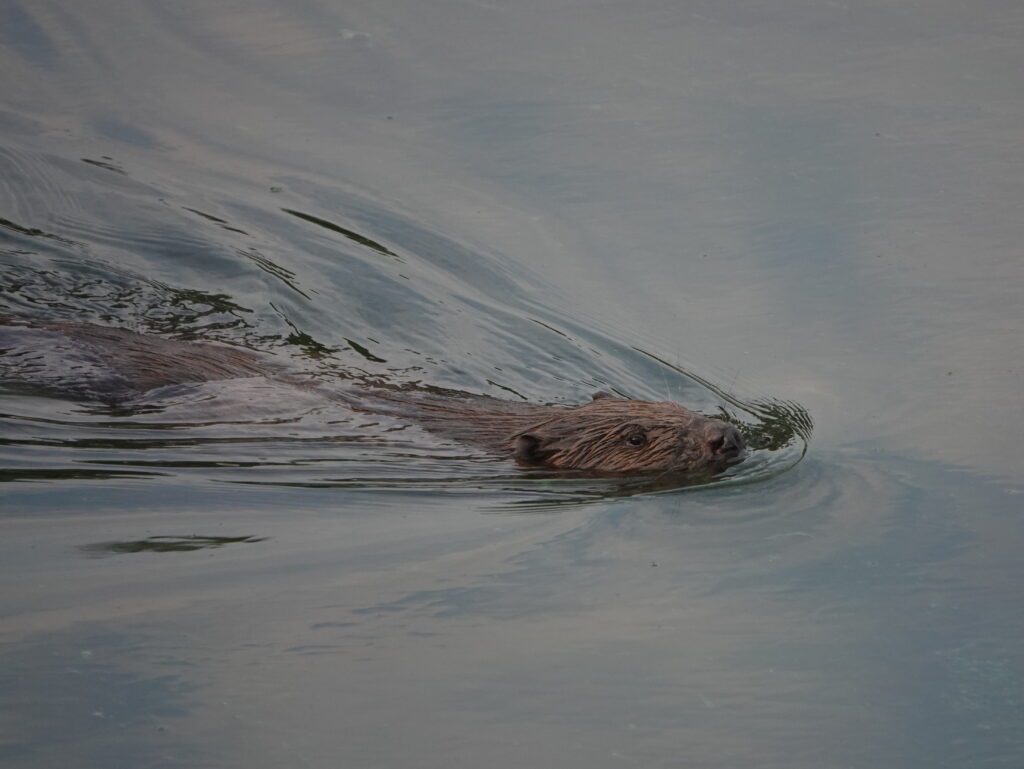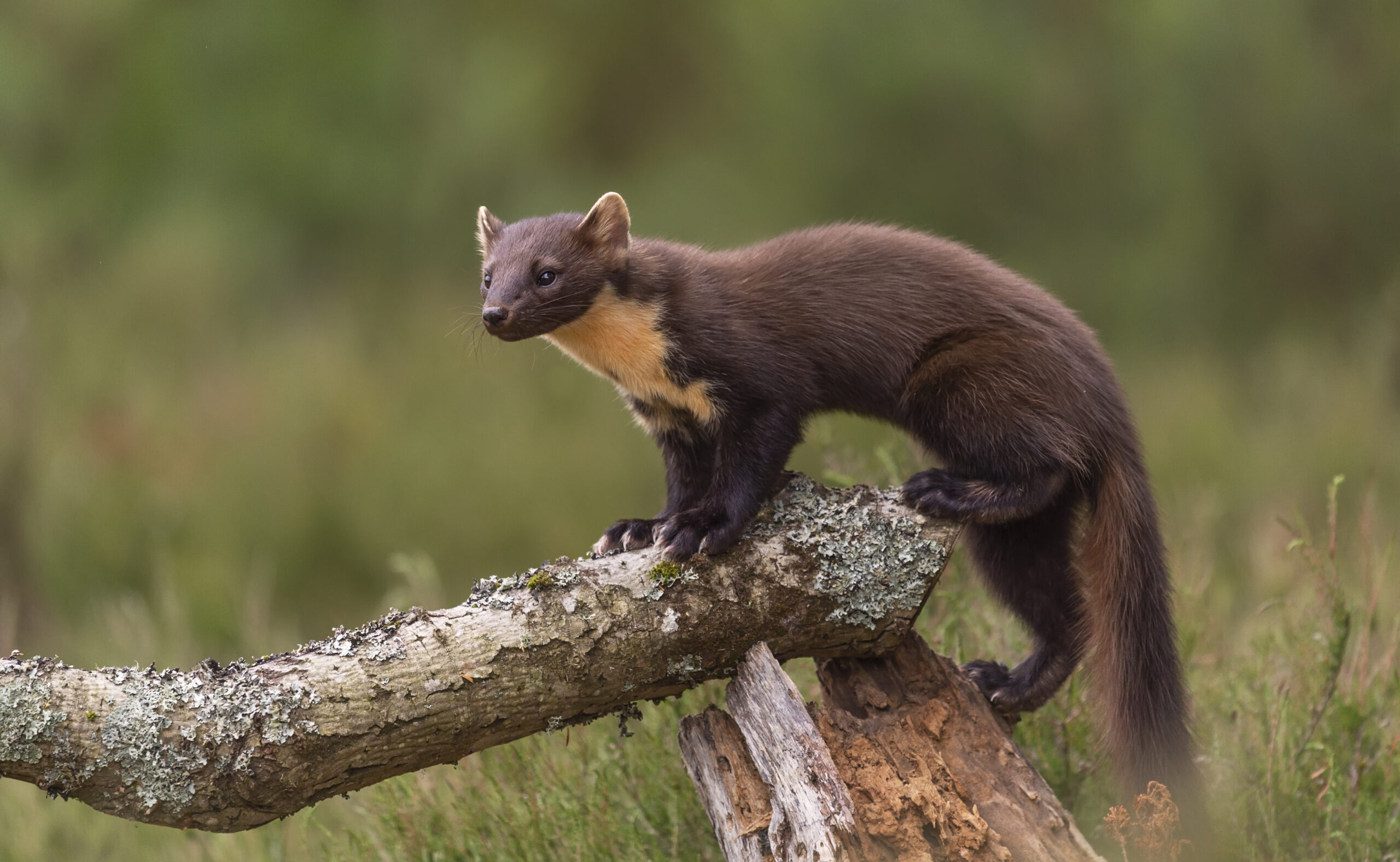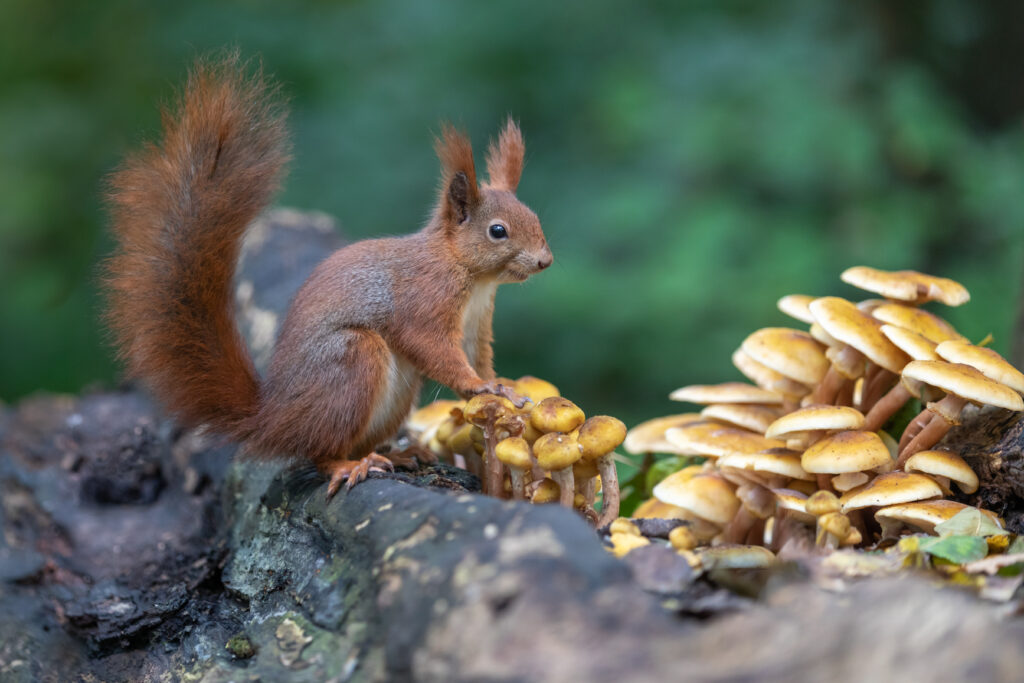This blog focusses on forgotten species; those that are extinct, endangered or just urban, small and under-recorded. With climate change, habitat loss and invasive species threatening our native mammals, highlighting their importance is vital in driving their conservation, so we have chosen to spotlight three of the UK’s endangered mammals, discussing their biology and characteristics, current conservation initiatives and what the future might look like for these animals.
Eurasian Beaver (Castor fiber)

Habitat: Freshwater, particularly streams and rivers near woodland.
Diet: Aquatic plants and grasses during warmer months, tree bark and shoots during winter. Preference for willow, Aspen, Alder and fruit trees.
Conservation Status: Critically endangered in England, endangered in Scotland.
Distribution: Free-range populations in the River Tay, River Otter and Knapdale, Scotland. Enclosed populations in Kent, Essex and the Forest of Dean. As of 2023, Scottish beavers have established 424 territories, housing up to 1,500 individuals.
Breeding: Between December and April. Birth in early summer of up to six kits, sexually mature at two years old.
Description: With distinctive orange, chisel-like teeth and a flat, scaled tail, beavers are instantly recognisable. Similar in size to a medium dog with shorter legs and a rounder body, the fur of a beaver ranges from brown to black. Once widespread in the UK, the Eurasian Beaver was historically persecuted for medicinal and cosmetic purposes. The species was hunted for fur, meat and the oil from its scent glands, resulting in extinction by the 1600’s.
Did you know? High iron content in the enamel of their teeth gives them their distinctive orange colour. This addition provides the teeth the extra strength that is required for felling trees and eating.
Conservation of Eurasian Beavers
Beavers are talented ‘engineers’, able to transform wetland and freshwater environments. Through the alteration and modification of these habitats, beavers can create complex wetlands, ponds and nurture more resilient ecosystems. Their dams provide a natural filtration system for freshwater landscapes and water quality is shown to increase as it passes through dam complexes, helping to reduce diffuse pollution in the area. Through improved water storage, beaver activities can also maintain water flow to drought-ridden landscapes, increasing the habitat’s resilience to climate change related conditions.

Environments altered by beaver presence host significantly higher diversity compared to those without. Tree felling can shed more light onto aquatic areas, encouraging growth of wetland vegetation. Feeding on larger, fleshy plants can favour smaller, slow-growing species in the surrounding habitat, leading to more abundant, diverse plant communities in the long-term. Species richness and overall abundance of small mammals, amphibians and bird species are also found to be higher in areas close to beaver dams.
After 400–500 years of local extinction, beaver reintroduction has been gathering traction in the UK. There are a number of reintroduction projects trialling their release, including the 2009 Scottish Beaver Trial in Knapdale Forest (which introduced around a dozen beavers to over four hectares of land) and the Devon Beaver Project which introduced one family group to an enclosed area in West Devon. England’s first wild project, The River Otter Beaver Trial, was founded due to the discovery of wild beavers in the region. This 5-year project observed eight family units over 28,700ha and is seeking to demonstrate the effect of beavers on other wildlife, local landscapes, water flow, water quality and local communities. Further reintroductions across the country have established both wild and enclosed populations of this keystone species.
Looking Forward
Reintroduction projects across the UK have been successful. Populations are breeding successfully and have been expanding their territories. However, there is cause for concern with the potential of conflicts to arise over land management. It is likely that, with expansion, there will be human-wildlife conflict with landowners and other stakeholders in the future. The impact of beaver activities on the environment can cause flooding of pasture, risk to crops and the felling of trees can cause harm to livestock and structures. Natural England has advised a paced approach to beaver reintroduction, minimising impacts to land use, infrastructure, livelihoods or environmental features while maximising benefits for the environment.
Water Vole (Arvicola amphibius)

Habitat: Grassy banks along slow-moving rivers, canals and streams. Marshes, reedbeds, wet moorland, wetland.
Diet: Grass and waterside vegetation. Wetland plants in spring and summer. Roots, rhizomes, bulbs and bark in autumn and winter. Occasional invertebrates.
Conservation Status: Endangered in England and critically endangered in Wales.
Distribution: Found throughout mainland UK. Absent from Northern Ireland and most offshore islands. Estimated population of 132,000, range and numbers have declined by 94% from historical populations.
Breeding: March–October. Breed in spring, producing up to four litters a year.
Description: A small rat-sized rodent, the Water Vole has chestnut brown hair covering their entire body and tail, with a round nose and nearly hidden ears. This semi-aquatic rodent was historically widespread until the population saw a decline, resulting in nearly 90% reductions by 1998.
Habitat loss, degradation and fragmentation are key drivers of Water Vole declines in the UK. General infrastructure development, along with urbanisation of flood plains, have resulted in extensive loss of habitat for this species. Partnered with loss of vegetation and trampling around freshwater banks from grazing livestock, large areas of freshwater habitat are now unsuitable for voles. The unintended introduction of American Mink (Neovison vison) has also been pivotal in the collapse of Water Vole populations across the UK. Initially brought to England for fur farming, escaped mink have predated heavily on this species.
Conservation of Water Voles
Through grazing activities on grasses and rushes at the water’s edge, Water Voles manipulate their habitats, much like beavers but on a smaller scale. This manipulation can make space for a new community of wildflowers and grasses, attracting a host of invertebrate species to an area. As a valuable prey species, elevating Water Vole populations can support predators in the surrounding environment. Barn Owls (Tyto alba), Otters (Lutra lutra) and Pine Martens (Martes martes) are examples of native predators that would benefit from the repopulation of Water Voles.

A number of regional wildlife trusts have undertaken Water Vole recovery projects to support their repopulation in UK waterways. These typically involve recording and monitoring existing Water Vole activity, habitat enhancement, coordination of mink control, and in some cases, reintroduction of the species: 300 voles in the Yorkshire dales, over 600 in Essex, 200 in Gwent and over 1,000 individuals in Kielder Forest. The Forestry Commission has also pledged to make changes in Kielder Forest; improving the landscape by refraining from planting trees on river edges, providing much-needed habitat. In order to protect Water Vole settlement, the species is protected under the Wildlife and Countryside Act (1981), the UK Biodiversity Framework, and is listed as a priority species on the UK Biodiversity Action Plan.
Looking Forward
Reintroduction efforts across the UK have had mixed results. A period of growth was observed following initial releases in Nottinghamshire, which has now slowed. Overall occupancy from 2006–2018 has declined by 23%. It is thought that the continued pressure of habitat loss and mink predation is preventing populations from settling successfully. Responding to the poor establishment of Water Vole populations, recovery projects are enhancing existing freshwater habitat and building new areas to establish populations. Breeding and release sites will also be created to facilitate the successful reproduction of Water Voles in a safe environment, away from predation. In addition to habitat enhancement, more widespread mink control is also expected.
Pine Marten (Martes martes)

Habitat: Native woodland, conifer plantations.
Diet: Small mammals, carrion, birds, eggs, fruit and invertebrates.
Conservation Status: Critically endangered in England and Wales, least concern in Scotland.
Distribution: Widespread and relatively common in Ireland. Populations recovering in the Scottish Highlands, some isolated populations in southern Scotland. Populations in northern England and Wales are fragmented and small. Populations estimated at 1,600–8,900 in Britain and Ireland.
Breeding: Mating season is during the summer months. One litter per year, born in March or April. Kits are fully grown at six months and sexually mature by three years old.
Description: Often confused with mink, Weasels or Stoats, the Pine Marten is a fellow member of the Mustelid family. Characterised by its chocolate brown fur and a distinctive, uniquely shaped light-yellow bib around the throat and chest, this elusive species has a long, bushy tail and large, rounded ears. Around the size of a domestic cat, Pine Marten are larger than both Weasels and Stoats and can be distinguished from mink by their chocolate coat.
Pine Marten populations underwent a major decline in the 19th century due to persecution by Victorian gamekeepers on sporting estates. Extensive habitat loss and fragmentation is another factor which contributed to the decline of these species in the UK.
Conservation of Pine Martens
The reintroduction of Pine Martens is favoured by many across the UK. The species is valued for their natural control of the invasive, non-native Grey Squirrel (Sciurus carolinensis), which can account for up to 14% of a Pine Martens diet. This predation allows the native, endangered Red Squirrel (Sciurus vulgaris) to take hold. Eradicating competition from Grey Squirrels, and reducing the risk of the squirrel pox virus, has allowed the Red Squirrel to successfully repopulate areas around Pine Marten territory.

The Two Moors Pine Marten Project, the South East Pine Marten Restoration Project, Back From the Brink and Martens on the Move are programmes founded to support the expansion of Pine Martens in England. A total of 35 individuals have been relocated from Scotland to the Forest of Dean and the Wye Valley, and further reintroductions are expected to take place on Exmoor and Dartmoor National Parks later this year. Other projects aim to facilitate reintroductions through the enhancement of key habitats (Martens on the Move) or to undertake surveys and monitoring to inform on species distribution (Back from the Brink).
By 2017, around 50 Pine Martens had been relocated to woodland in mid-Wales from their original home in Scotland. The population was radio tracked throughout the first year, which monitored their movement and behaviour. The group have established a viable population, breeding every year since reintroduction.
Looking Forward
The future of Pine Martens in the UK is promising. Monitoring of existing projects shows successful breeding and expansion from Scotland into Northern England. It is expected that more Pine Martens will be released in the Forest of Dean, in addition to an estimated 40 individuals to be released with the Two Moors Restoration Project in autumn 2024. It is hoped that, with further expansion, populations may link with Welsh Pine Martens, boosting connectivity and genetic diversity.
However, as populations continue to expand, there is an increasing risk of conflict. With greater human populations, greater infrastructure, and greater exposure to protected species, concerns may arise among the public. The species are known to find their way into chicken coops and pheasant pens, damaging livestock and causing conflict with local farmers. The Vincent Wildlife Trust, Natural England and NatureScot recommend sufficient Pine Marten monitoring, active engagement and open communication with stakeholders to mitigate potential conflicts before they arise.
For more information on British mammals and their conservation, visit The Mammal Society website.

